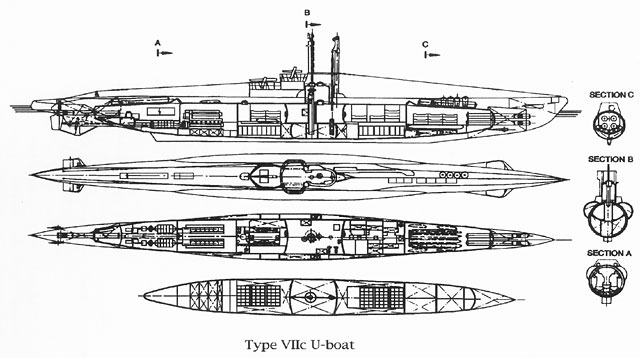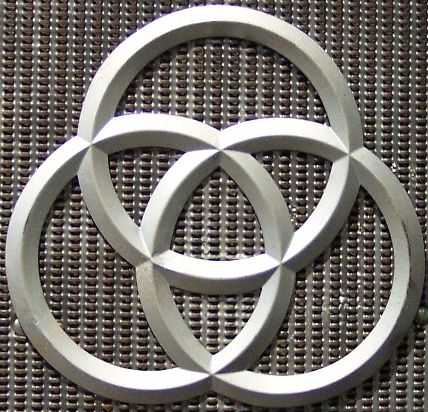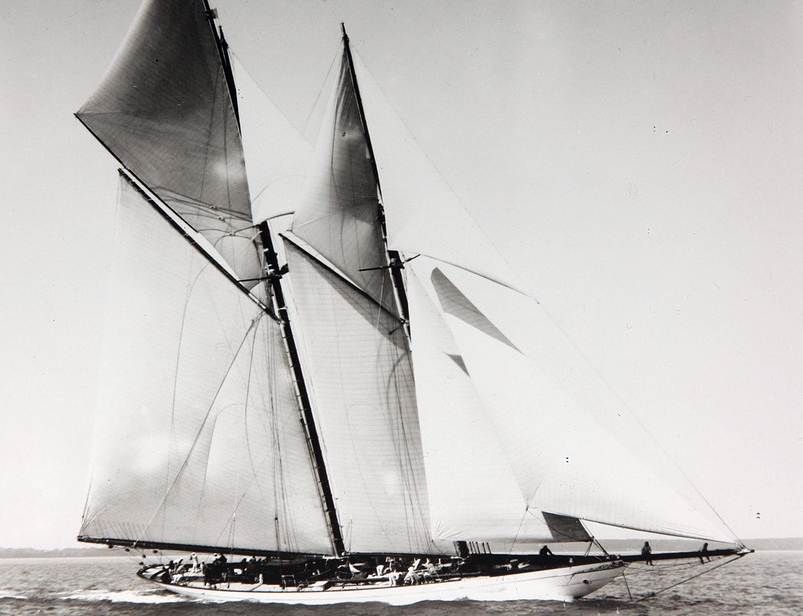|
Germaniawerft
Friedrich Krupp Germaniawerft (often just called Germaniawerft, "Germania (personification), Germania shipyard") was a German shipbuilding company, located in the harbour at Kiel, and one of the largest and most important builders of U-boats for the Kaiserliche Marine in World War I and the Kriegsmarine in World War II. The original company was founded in 1867 but went bankrupt and was bought out by Friedrich Alfred Krupp, Friedrich Krupp. Krupp was very interested in building warships and in the time before the First World War built a number of battleships for the Kaiserliche Marine, including , , , and . A total of 84 U-boats were built in the shipyard during the war. After the war it returned to the normal production of yachts and transports. History The company was founded in 1867 by Lloyd Foster, as the Norddeutsche Schiffbau-Gesellschaft, in the town of Gaarden, near Kiel. The idea of the company was to construct warship, war and merchant ships. In 1876 the company built the ... [...More Info...] [...Related Items...] OR: [Wikipedia] [Google] [Baidu] |
Type VII U-boat
Type VII U-boats were the most common type of German World War II U-boat. 704 boats were built by the end of the war. The type had several modifications. The Type VII was the most numerous U-boat type to be involved in the Battle of the Atlantic. The lone surviving example, , is on display at the Laboe Naval Memorial located in Laboe, Schleswig-Holstein, Germany. At the start of the Second World War the ''Type VII'' class wastogether with the British ''U'', ''S'' and ''T'' class and Dutch ''O 21'' classone of the most advanced submarine classes in service. Design After the defeat in World War I, the Treaty of Versailles forbade Germany to build submarines. Germany circumvented the treaty by setting up the Dutch dummy company ''NV Ingenieurskantoor voor Scheepsbouw Den Haag'' (I.v.S) which continued to design submarines. Based on the World War I design of the Type UB III and its never-built successors Type UF and Type UG, IVS designed the Vetehinen-class submarine and i ... [...More Info...] [...Related Items...] OR: [Wikipedia] [Google] [Baidu] |
Friedrich Alfred Krupp
Friedrich Alfred Krupp (; 17February 185422November 1902) was a German steel manufacturer and head of the company Krupp. He was the son of Alfred Krupp and inherited the family business when his father died in 1887. Whereas his father had largely supplied iron and steel, Friedrich shifted his company's production back to arms manufacturing. Friedrich greatly expanded Krupp and acquired the Friedrich Krupp Germaniawerft, Germaniawerft in 1896 which gave him control of warship manufacturing in German Empire, Germany. He oversaw the development of nickel steel, U-boats, the diesel engine, and much more. He died in 1902, possibly by suicide, after being accused of homosexuality. His daughter Bertha Krupp, Bertha inherited the company. Early life and education Krupp was born in Essen, Germany. His father was Alfred Krupp, who turned the small local ironworks of Krupp into one of the most powerful companies in the world. Raised in the unhealthy atmosphere of the Ruhr, he suffered from ... [...More Info...] [...Related Items...] OR: [Wikipedia] [Google] [Baidu] |
Krupp
Friedrich Krupp AG Hoesch-Krupp (formerly Fried. Krupp AG and Friedrich Krupp GmbH), trade name, trading as Krupp, was the largest company in Europe at the beginning of the 20th century as well as Germany's premier weapons manufacturer during both world war, world wars. It produced battleship, battleships, U-boats, tanks, howitzers, guns, utilities, and hundreds of other commodities. The company also produced steel used to build railroads in the United States and to cap the Chrysler Building. After the Nazi Germany, Nazis seized power in Germany, Krupp supported the regime and was one of many German businesses that profited from forced labour under German rule during World War II, slave labor during World War II. Upon the war's end, the head of the company, Alfried Krupp, was tried and convicted as a war criminal for employing prisoners of war, foreign civilians and concentration camp inmates under inhumane conditions in support of the Nazi war effort. Despite being senten ... [...More Info...] [...Related Items...] OR: [Wikipedia] [Google] [Baidu] |
Type II U-boat
The Type II U-boat was designed by Nazi Germany as a coastal U-boat, modeled after the CV-707 submarine, which was designed by the Dutch front company NV Ingenieurskantoor voor Scheepsbouw Den Haag (I.v.S) (set up by Germany after World War I in order to maintain and develop German submarine technology and to circumvent the limitations set by the Treaty of Versailles) and built in 1933 by the Finnish Crichton-Vulcan shipyard in Turku, Finland. It was too small to undertake sustained operations far away from the home support facilities. Its primary role was found to be in the training schools, preparing new German naval officers for command. It appeared in four sub-types. Background Germany was stripped of its U-boats by the Treaty of Versailles at the end of World War I, but in the late 1920s and early 1930s began to rebuild its armed forces. The pace of rearmament accelerated under Adolf Hitler, and the first Type II U-boat was laid down on 11 February 1935. Knowing that the w ... [...More Info...] [...Related Items...] OR: [Wikipedia] [Google] [Baidu] |
Half Moon (shipwreck)
The ''Half Moon'' (also known as the ''Germania'' and ''Exen'') was a racing sailboat; it sank in 1930 near Miami, Florida, United States. The wreck is outside Bear Cut, which separates Virginia Key from Key Biscayne. Christened ''Germania'', the racing yacht featured a chrome-nickel steel hull built by Krupp-Germania-Werft in 1908 in Kiel, Germany. During a visit to England in 1914, the yacht was seized as a 'war prize'. After changing owners several times, and surviving an especially-violent storm off Virginia, the yacht became a floating restaurant and dance hall off Miami. It sank near Key Biscayne in 1930. In 2000, the wreck became the seventh Florida Underwater Archaeological Preserve. In 2001, it was added to the US National Register of Historic Places The National Register of Historic Places (NRHP) is the Federal government of the United States, United States federal government's official United States National Register of Historic Places listings, list of sites, bui ... [...More Info...] [...Related Items...] OR: [Wikipedia] [Google] [Baidu] |
U-boat
U-boats are Submarine#Military, naval submarines operated by Germany, including during the World War I, First and Second World Wars. The term is an Anglicization#Loanwords, anglicized form of the German word , a shortening of (), though the German term refers to any submarine. Austro-Hungarian Navy submarines were also known as U-boats. U-boats are most known for their unrestricted submarine warfare in both world wars, trying to Commerce raiding, disrupt merchant traffic towards the UK and force the UK out of the war. In World War I, Germany intermittently waged unrestricted submarine warfare against the United Kingdom, UK: a first campaign in 1915 was abandoned after strong protests from the US but in 1917 the Germans, facing deadlock on the continent, saw no other option than to resume the campaign in February 1917. The renewed campaign failed to achieve its goal mainly because of the introduction of Convoys in World War I, convoys. Instead the campaign ensured final defeat ... [...More Info...] [...Related Items...] OR: [Wikipedia] [Google] [Baidu] |
Howaldtswerke-Deutsche Werft
Howaldtswerke-Deutsche Werft GmbH (often abbreviated HDW) is a German shipbuilding company, headquartered in Kiel. It is part of the ThyssenKrupp Marine Systems (TKMS) group, owned by ThyssenKrupp. The Howaldtswerke shipyard was founded in Kiel in 1838 and merged with Hamburg, Hamburg-based Deutsche Werft to form Howaldtswerke-Deutsche Werft (HDW) in 1968. The company's shipyard was formerly used by Friedrich Krupp Germaniawerft until the end of World War II. History HDW was founded October 1, 1838 in Kiel by engineer August Howaldt and entrepreneur under the name ''Maschinenbauanstalt und Eisengießerei Schweffel & Howaldt'' (Machine Factory and Iron Foundry Schweffel & Howaldt), initially building boilers. The first steam engine for naval purposes was built in 1849 for Von der Tann (gunboat), ''Von der Tann'', a gunboat for the small navy of Schleswig-Holstein. In 1850, the company built an early submarine, ''Brandtaucher'', designed by Wilhelm Bauer. It had been intended ... [...More Info...] [...Related Items...] OR: [Wikipedia] [Google] [Baidu] |
Sailing Ship
A sailing ship is a sea-going vessel that uses sails mounted on Mast (sailing), masts to harness the power of wind and propel the vessel. There is a variety of sail plans that propel sailing ships, employing Square rig, square-rigged or Fore-and-aft rig, fore-and-aft sails. Some ships carry square sails on each mast—the brig and full-rigged ship, said to be "ship-rigged" when there are three or more masts. Others carry only fore-and-aft sails on each mast, for instance some schooners. Still others employ a combination of square and fore-and-aft sails, including the barque, barquentine, and brigantine. Early sailing ships were used for river and coastal waters in Ancient Egypt and the Mediterranean. The Austronesian peoples developed maritime technologies that included the fore-and-aft crab-claw sail and with catamaran and outrigger boat, outrigger hull configurations, which enabled the Austronesian expansion into the islands of the Indo-Pacific. This expansion originated in Ta ... [...More Info...] [...Related Items...] OR: [Wikipedia] [Google] [Baidu] |
Barque
A barque, barc, or bark is a type of sailing ship, sailing vessel with three or more mast (sailing), masts of which the fore mast, mainmast, and any additional masts are Square rig, rigged square, and only the aftmost mast (mizzen in three-masted barques) is Fore-and-aft rig, rigged fore and aft. Sometimes, the mizzen is only partly fore-and-aft rigged, bearing a square-rigged sail above. Etymology The word "barque" entered English via the French term, which in turn came from the Latin language, Latin ''barca'' by way of Occitan language, Occitan, Catalan language, Catalan, Spanish, or Italian. The Latin may stem from Celtic language, Celtic ''barc'' (per Rudolf Thurneysen, Thurneysen) or Greek ''baris'' (per Friedrich Christian Diez, Diez), a term for an Egyptian boat. The ''Oxford English Dictionary'', however, considers the latter improbable. The word ''barc'' appears to have come from Celtic languages. The form adopted by English, perhaps from Irish language, Irish, was ... [...More Info...] [...Related Items...] OR: [Wikipedia] [Google] [Baidu] |
Hull (watercraft)
A hull is the watertight body of a ship, boat, submarine, or flying boat. The hull may open at the top (such as a dinghy), or it may be fully or partially covered with a deck. Atop the deck may be a deckhouse and other superstructures, such as a funnel, derrick, or Mast (sailing), mast. The line where the hull meets the water surface is called the waterline. General features There is a wide variety of hull types that are chosen for suitability for different usages, the hull shape being dependent upon the needs of the design. Shapes range from a nearly perfect box, in the case of scow barges, to a needle-sharp surface of revolution in the case of a racing multihull sailboat. The shape is chosen to strike a balance between cost, hydrostatic considerations (accommodation, load carrying, and stability), hydrodynamics (speed, power requirements, and motion and behavior in a seaway) and special considerations for the ship's role, such as the rounded bow of an icebreaker or the flat bot ... [...More Info...] [...Related Items...] OR: [Wikipedia] [Google] [Baidu] |
Battleship
A battleship is a large, heavily naval armour, armored warship with a main battery consisting of large naval gun, guns, designed to serve as a capital ship. From their advent in the late 1880s, battleships were among the largest and most formidable weapon systems ever built, until they were surpassed by aircraft carriers beginning in the 1940s. The modern battleship traces its origin to the sailing ship of the line, which was developed into the steam ship of the line and soon thereafter the ironclad warship. After a period of extensive experimentation in the 1870s and 1880s, ironclad design was largely standardized by the British , which are usually referred to as the first "pre-dreadnought battleships". These ships carried an armament that usually included four large guns and several medium-caliber guns that were to be used against enemy battleships, and numerous small guns for self-defense. Naval powers around the world built dozens of pre-dreadnoughts in the 1890s and early ... [...More Info...] [...Related Items...] OR: [Wikipedia] [Google] [Baidu] |
Steam Engine
A steam engine is a heat engine that performs Work (physics), mechanical work using steam as its working fluid. The steam engine uses the force produced by steam pressure to push a piston back and forth inside a Cylinder (locomotive), cylinder. This pushing force can be transformed by a connecting rod and Crank (mechanism), crank into rotational force for work. The term "steam engine" is most commonly applied to reciprocating engines as just described, although some authorities have also referred to the steam turbine and devices such as Hero's aeolipile as "steam engines". The essential feature of steam engines is that they are external combustion engines, where the working fluid is separated from the combustion products. The ideal thermodynamic cycle used to analyze this process is called the Rankine cycle. In general usage, the term ''steam engine'' can refer to either complete steam plants (including Boiler (power generation), boilers etc.), such as railway steam locomot ... [...More Info...] [...Related Items...] OR: [Wikipedia] [Google] [Baidu] |










